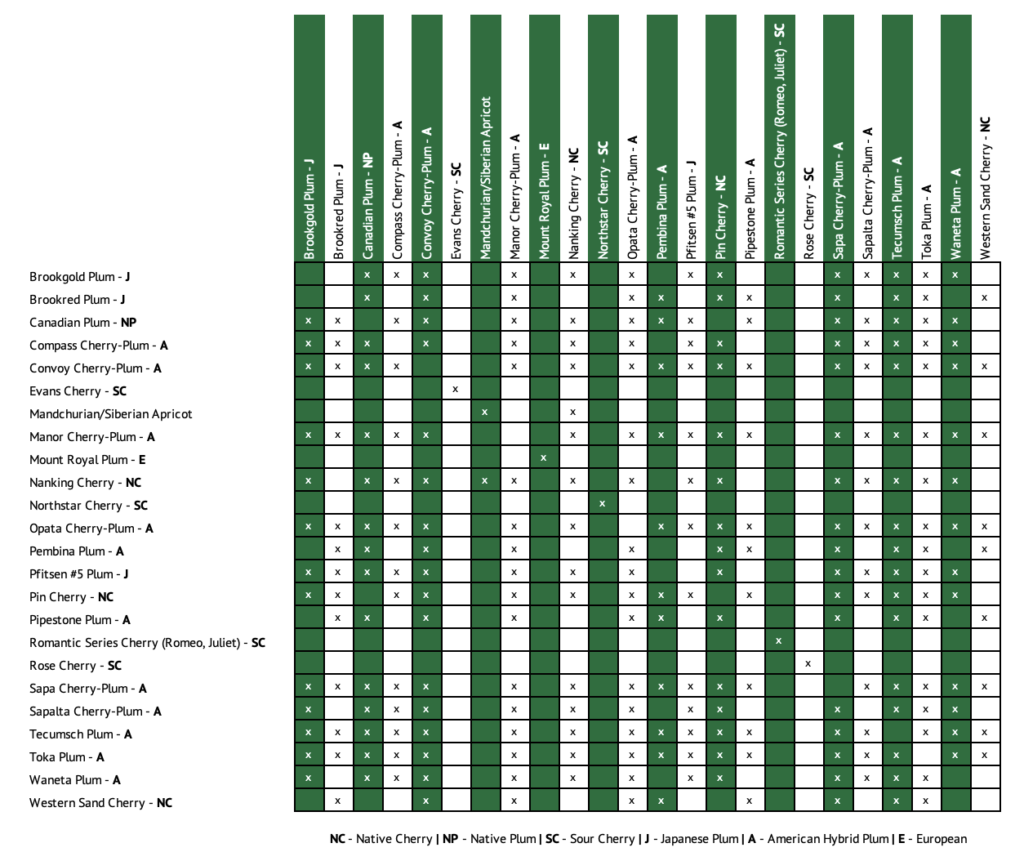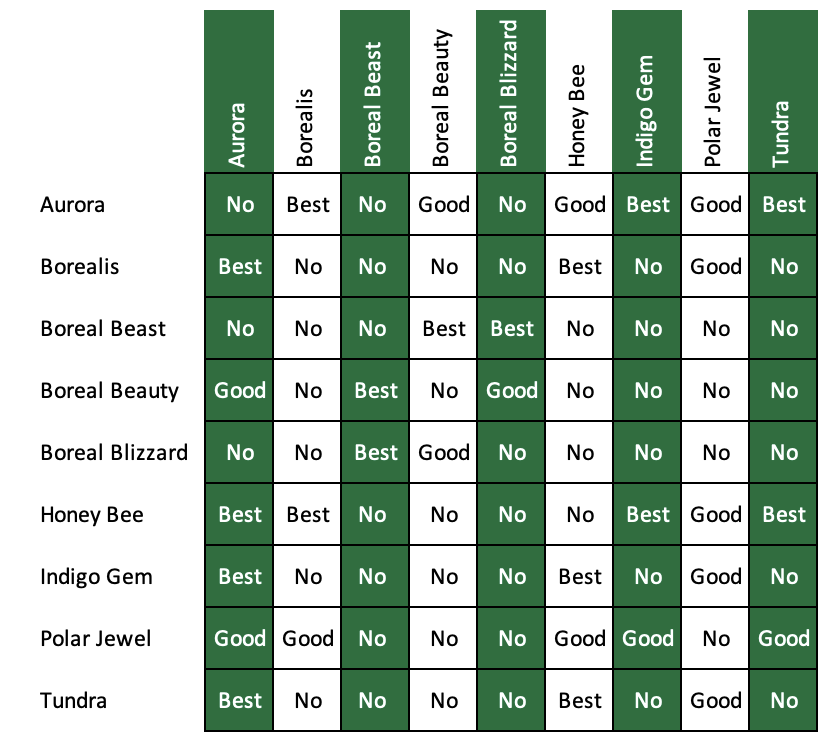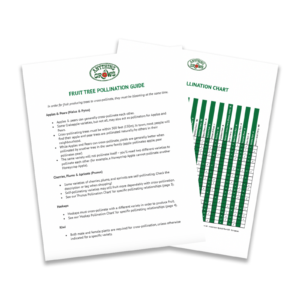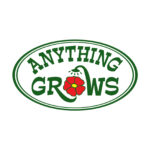
You may be surprised to learn that we can actually grow a good variety of fruit here in our Prairie climate! However, with the many genuses and varieties of fruit trees, pollination for fruit production can get complicated quickly. We wanted to take the complexities of cross-pollination and make it simple for you, with our easy and quick Fruit Tree Pollination Guide. You can skip all the mumbo jumbo if you want, and scroll right to the bottom where you can view the quick guide. But if you’re curious to learn more about how pollination works, read on!
First of all, here in Alberta, many fruit trees receive cross pollination from neighbourhood bees doing their good work (so you don’t always have to plant two to get fruit). However, if we put a bit of attention towards ensuring your trees have a suitable pollination partner nearby (within 150m) you can increase your yields and often the size of each piece of fruit – which means a bigger and better harvest for your efforts. Even self-pollinating fruit varieties can often benefit from a nearby cross-pollinator, yielding more fruit than when they are on their own.

Some plants go to great lengths to ensure they don’t pollinate themselves, after all, it is usually better for a species to keep their genetics diverse. Charts, graphs and the like make it seem like it only matters genetically which tree is compatible with another (and sometimes it does) but it frequently just comes down to timing – we generally need to know which trees are in bloom at the same time. Bees can’t cross pollinate two trees if one is in bloom two months after the first. They both need open and viable blooms at the same time for the job to get done. If you’d like to read more about the science details read this. While there is much to learn, we’re going to keep it simple so you can get better fruit by just following these tips:
Generally, Apples & Pears can cross-pollinate each other, however, they are not as dependable as two apples, and two pears. Keep in mind that two of the same variety cannot pollinate each other either (for example, a Honeycrisp Apple cannot pollinate a Honeycrisp Apple). Genetic diversity is important, and nature knows it! You’ll need two different varieties in order for cross-pollination and fruit production to successfully occur.
Most flowering ornamental crabapples can also be a cross-pollinators for Apple and Pear Trees, with the exception of the Spring Snow Crabapple (which is a sterile variety). Varieties such as the Thunderchild or Royalty Flowering Crabapples will provide cross-pollination.
Since Apple, Pear and Crabapple trees are generally abundant in most communities, you’re likely to have your Apple or Pear tree cross-pollinated naturally by a neighbouring tree within 150 meters.
Cherries, Plums and Apricots are a little pickier, and generally need to be cross-pollinated by another specific, compatible, genetically-different variety. In addition, there are some varieties that are self-pollinating (such as Romeo or Juliet Cherries). But keep in mind that even self-pollinating varieties can produce bigger, more abundant fruit with reliable cross-pollination!
See our Prunus Pollination Chart for specific pollinating relationships:

Haskaps must be pollinated by a different variety of Haskap in order to produce fruit, but not all varieties work together! Refer to our Haskap Pollination Guide to see which varieties will work most effectively when planted together:

The following fruit trees and shrubs are self-pollinating (unless otherwise indicated on the tag):
Kiwis and Sea Buckthorn are both fruiting plants that require both a male and female plant to be present, in order for the female plant to produce fruit (the male plants do not – makes sense, right?). Be sure to check the tag of the specific variety you have chosen (or google it) to find out if it’s male or female. You may find some exceptions in this category, as there are some varieties of these plants that are self-pollinating.
If your tree doesn’t produce fruit to your expectations there are several reasons for low yields in your fruit trees including:
Weather – a slow, damp and cool spring will keep the bees snug in their nests longer and it may mean there aren’t enough of them out and about when your tree is in bloom.
Cyclical fruiting – some trees will put out an abundance of fruit one year and then rest a bit the next before putting out another bumper crop the year after. It’s just the way they work and nothing to worry about. If you notice this pattern, you could plant a second tree in the ‘down’ year to hopefully get more fruit in the slow period.
No partner – if you live in a new development, maybe there isn’t a partner pollinator nearby? Some ornamental crab apples are sterile. You may need to plant another tree of the same genus (apples to apples, pears to pears, plums to plums etc.) for better results.
Not enough pollinators – usually a flowering apple tree will attract bees but planting other pollinator plants won’t hurt. Read 10 plants to grow for the bees and pollinators.
Want an easy reference for all this pollinating info? Download our free Fruit Tree Pollination Guide below, and keep it handy!
As always, if you have more questions, come chat with us in store! We’re happy to talk about getting you more fruit for your investment.


We are Cochrane & West Calgary’s largest Garden Center, owned-and-operated by plant-loving locals. We’re glad you’re here. You can visit us 7 days a week in store, or online. Get Directions
Get free gardening resources, monthly coupons, and new arrival alerts, straight to your inbox.
Join Now